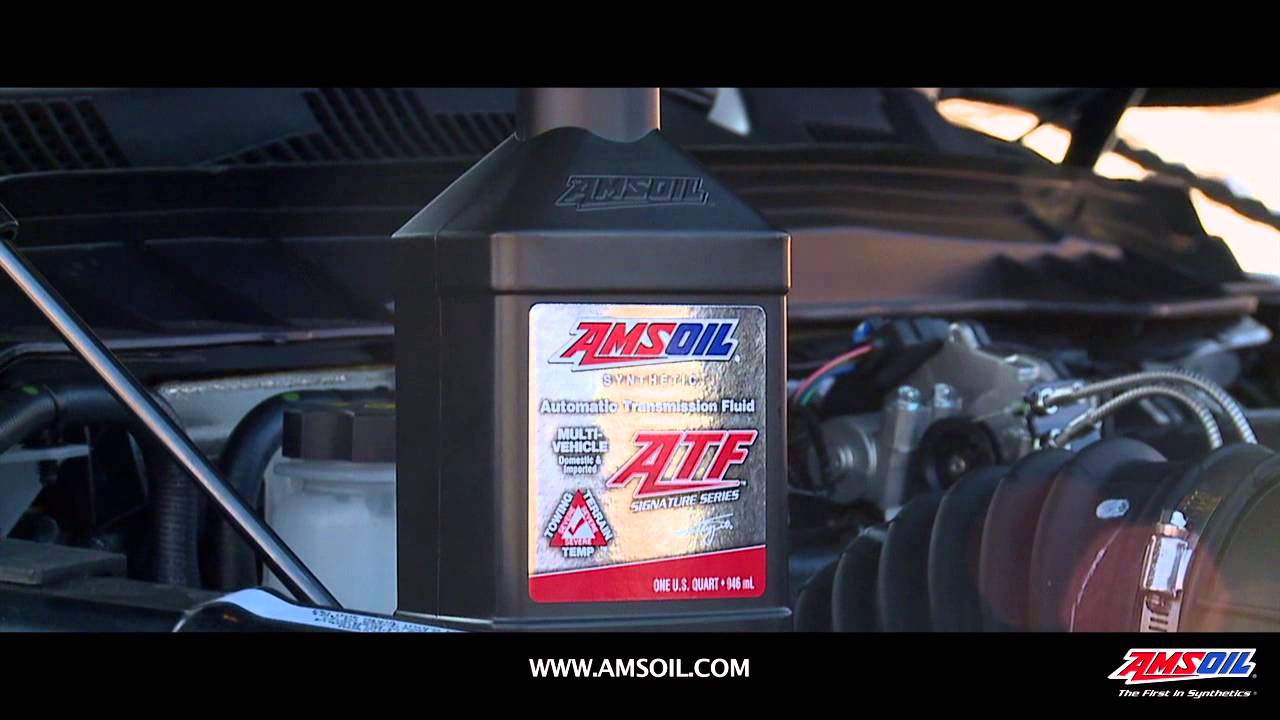Transmission Pan Drop vs. Flush: Which is Better?
It depends on what you want to accomplish. But, first of all, check your owner’s manual to see if your vehicle manufacturer recommends one instead of the other.
If you want to ensure removal of nearly all the old transmission fluid, then have your transmission flushed.
Here’s what we’ll cover:
- What is a Transmission Flush?
- Downsides of a Transmission Flush
- What is a Transmission Flushing Machine?
- Pan-Drop Transmission Flush
- Tips for Performing a Pan-Drop
What is a Transmission Flush?
The benefits are self-evident: all the old, dirty fluid is replaced with fresh, high-quality fluid. (And, as you can see in the image, new transmission fluid is preferable to old fluid). As a result, your transmission should run cooler and receive maximum protection against wear to clutches, gears and bearings. It should also shift consistently and crisply since the new fluid will provide the correct frictional properties (old fluid loses its frictional properties over time).
Not only that, but performing a flush helps clean the transmission. Sludge and other contaminants can accumulate in the fluid due to extreme heat breaking down the fluid. These contaminants circulate throughout the transmission before lodging in the filter. Before the filter can safely capture the contaminants, however, they can lodge in the narrow fluid passages inside the valve body, leading to poor shift quality.
Performing a flush also allows you to use a flush additive to help clean the transmission and more effectively remove accumulated sludge and other contaminants.
Any downsides?
Potentially.
For one, it’s more expensive. And some people warn against performing a flush on a transmission using old, dirty fluid. The flushing procedure may direct the fluid in the opposite direction of normal flow, which may increase the risk of dislodging debris and causing it to settle somewhere it shouldn’t. Since the way each shop performs a flushing procedure varies, you can’t know for certain.
What is a transmission flushing machine?
A typical flushing machine uses hoses that connect into the transmission cooling lines. It drains the old fluid and holds it inside the machine while replenishing the transmission with new fluid. Unlike a simple pan drop, a flushing machine removes just about all the old fluid, including the fluid inside the torque converter.
Since the procedure uses new fluid to perform the flush, it requires several quarts of new fluid beyond the transmission’s final capacity. Those extra quarts are where most of the added cost lies.
The good ‘ol pan-drop
If you have reservations about a flush, go with a pan-drop instead. While it reduces the risk associated with flushing old, dirty fluid through the transmission, a pan-drop also has downsides.
- Removes only about a third of the fluid
- Can be a mess
- Can be a pain on some vehicles
I can tell you from experience that a pan-drop can be a bigger job than you think. You may have to remove plastic splash guards or metal skid plates to access the transmission pan. In case you haven’t been under your vehicle in a while, plan on encountering rusted, stuck bolts if you drive in wet, snowy conditions. Don’t be surprised if you crack a splash guard in one or two places as you try to remove/reinstall it.
Tips for performing a pan-drop:
- Have a large catch pan handy. Otherwise, once you loosen the pan bolts, fluid is going to ooze from the pan/transmission interface and end up all over the floor.
- If you’re crafty, you can back out the pan bolts in one corner further than the surrounding bolts, effectively tilting the pan so the fluid drains from a single corner instead of overflowing the entire pan. This reduces mess quite a bit.
- Wear safety glasses and gloves.
- Don’t forget the new filter and pan gasket.
- It’s a good idea to know the torque specs on the pan bolts and use a torque wrench to reinstall them. Otherwise you risk overtightening and ruining the gasket.
You might get lucky, though
Some vehicle manufacturers install a drain plug on the transmission, similar to a motor oil drain plug. This allows you to easily and cleanly drain some fluid from the transmission minus the hassle of removing the pan. Again, though, you only get a third to half the fluid out.
You can then drive the vehicle for a while, then drain the fluid and change it again. Do this 2-3 times and you’ll remove nearly all the old fluid and perform a sort of poor-man’s transmission fluid flush.
Bottom line: Visit a pro and have the transmission flushed for best results and least hassle (unless your vehicle manufacturer specifically warns against it in the owner’s manual). But, if you have reservations about dislodging debris due to old, dirty fluid, a series of pan drops works just as well.




